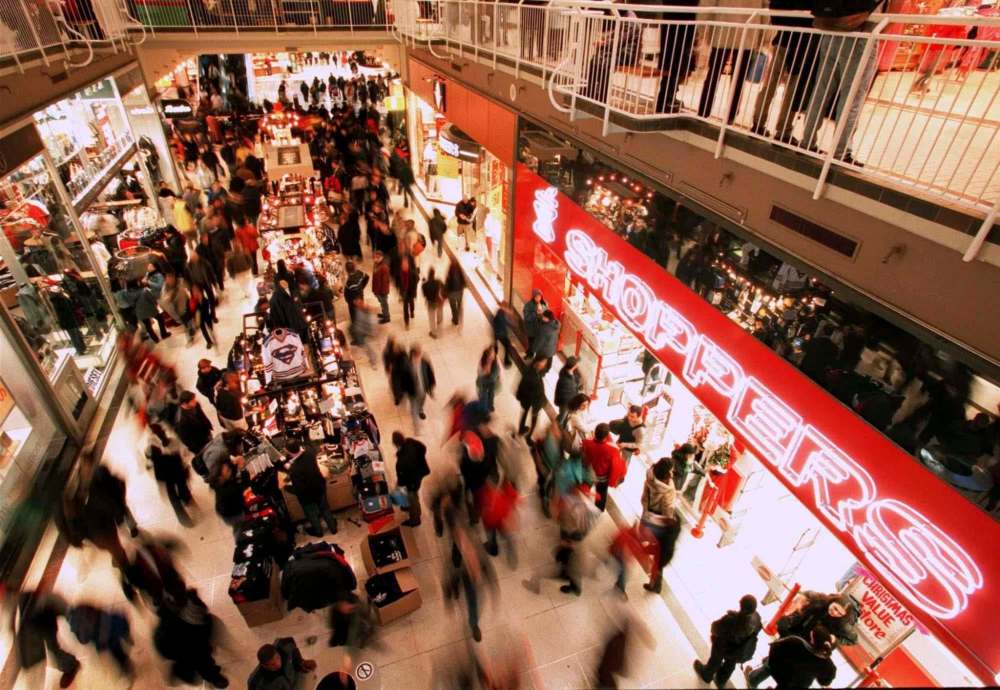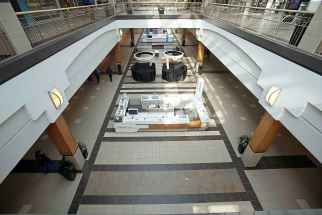Retail revolution If malls are to survive the COVID-19 crisis, they must adapt quickly to what consumers want
Read this article for free:
or
Already have an account? Log in here »
To continue reading, please subscribe:
Monthly Digital Subscription
$0 for the first 4 weeks*
- Enjoy unlimited reading on winnipegfreepress.com
- Read the E-Edition, our digital replica newspaper
- Access News Break, our award-winning app
- Play interactive puzzles
*No charge for 4 weeks then price increases to the regular rate of $19.00 plus GST every four weeks. Offer available to new and qualified returning subscribers only. Cancel any time.
Monthly Digital Subscription
$4.75/week*
- Enjoy unlimited reading on winnipegfreepress.com
- Read the E-Edition, our digital replica newspaper
- Access News Break, our award-winning app
- Play interactive puzzles
*Billed as $19 plus GST every four weeks. Cancel any time.
To continue reading, please subscribe:
Add Free Press access to your Brandon Sun subscription for only an additional
$1 for the first 4 weeks*
*Your next subscription payment will increase by $1.00 and you will be charged $16.99 plus GST for four weeks. After four weeks, your payment will increase to $23.99 plus GST every four weeks.
Read unlimited articles for free today:
or
Already have an account? Log in here »
Hey there, time traveller!
This article was published 13/07/2020 (1975 days ago), so information in it may no longer be current.
Even before COVID-19, the shopping mall was facing an identity crisis.
For decades, the sprawling indoor plazas were the go-to place for big brand names and flagship clothing retailers. But certain developments — a shift toward digital shopping, a move away from “fast fashion,” a reconsideration of the value of physical retail space — have been chipping away at the mall concept for years.
Last year, the top 10 Canadian malls experienced a 22 per cent decrease in foot traffic compared to 2018. When the novel coronavirus became a reality for consumers and mall managers, foot traffic took a nosedive toward zero.
Now, as provinces enter their new normals, the pressures that were already threatening malls have multiplied tenfold, and a new report from Deloitte Canada on the future of shopping in this country sends a clear message: to survive, the country’s malls need to quickly adapt, turning their five-year plans into five-week strategies.
“One thing is certain,” says Marty Weintraub, Deloitte’s national retail leader, “a revolution is coming to our retail experience.” From the contents of the 20-page report, which drew on insight from major mall landlords, retailers and consumers, it’s obvious the revolution was already underway.
“One thing is certain: a revolution is coming to our retail experience.”–Marty Weintraub
David Ian Gray, a Vancouver-based retail analyst and consultant, says all the urgent needs brought to light by COVID-19 were well-known before the pandemic, only to have accelerated over the past few months.
“In a complex system in tremendous uncertainty, the future still holds a range of good and bad scenarios, all plausible and possible,” Gray says. “Be nimble, ready to react to all of them.”
Weintraub predicts the malls that do best will do just that. Spending on retail technology increased by nearly four per cent worldwide (reaching $203.6 billion) between 2018 and 2019, and with the pandemic, Deloitte predicts that growth will be greatly compounded, as will spending on altered delivery and pick-up services. A big reason for that? Consumers need to be convinced to come back.

“At the end of the day, this is rooted in consumer mindset shifts,” Weintraub says. “It’s not retailers or mall owners. Let’s be very clear: this is the consumer pushing it.”
According to Deloitte’s data, culled from a survey of 1,000 respondents in May and June, nearly four in five consumers expect online shopping to be more popular moving forward. Conversely, almost two-thirds expect enclosed-mall shopping to wane in appeal.
About a quarter of consumers said they shopped in malls at least once weekly pre-pandemic; that proportion is expected to be cut in half, the survey says.
In Deloitte’s report, the company identifies five key changes malls should consider — if they hadn’t already — in order to remain viable.
Deloitte’s key focuses for landlords and retailers
In Deloitte’s report, the company identifies five key changes malls should consider — if they hadn’t already — in order to remain viable.
1. Safety and convenience: retailers and owners need to address concerns by finding innovative ways to adjust how they organize stores, interact with customers, and process transactions.
2. Rethink the store’s role: the number and size of a retailer’s stores, as well as its layout and function, should be reconsidered to address the new retail reality.
3. Make way for food: with an expected exodus of mid-size fashion retailers, malls will have an abundance of space available, and to draw customers back — when they’re ready — Deloitte anticipates restaurants will become the new anchor tenant.
4. Embrace technology: omni-channel sales strategies — streamlining digital and in-store methods — have been key for savvy retailers for over a decade. Retailers can’t likely afford to avoid technology in a future mall, Deloitte says.
5. Become a destination: while malls have long-been hangout spots, they’ll need to become something more as the new normal sets in. Deloitte’s report calls for a diversified mall, with emphasis on short-term pop-ups, exhibitions, and interactive experiences.
While those changes won’t happen overnight, Weintraub anticipates smart retailers will shift their strategies to address them over the short- and long-term. Most of the suggested strategies were already needed to address the existing pressures malls face.
First, safety and convenience will be at the fore: a smooth shopping experience — which consumers have learned exists online — must be replicated in-store. Weintraub says certain innovations, like curbside pick-up, have staying power. “Customers told us they loved it, and that they want it to stay,” he says.
As wise retailers have been doing for years, Deloitte also suggests retailers reconsider the size and number of stores they and consumers need: innovations to make that happen include emphasizing distribution space over floor space to streamline purchasing through a showroom approach — a technique already used in malls by companies like Tesla.
Deloitte’s data show consumers are more likely across every category, including apparel, health, household, and hobbies, to make purchases online now than they were pre-pandemic. Consumers are also less likely to shop in-store for those same items. This drives home the need for digitization, Weintraub says.
With apparel retailers hit where it hurts by the pandemic, Weintraub says in the long run malls could see restaurants becoming their new anchor tenants. “Smart mall owners are viewing food and beverage venues as the new anchor that will enhance their destination appeal,” the report says.
“The ‘mall’ as we know it will change forever, likely so much we will need a new name for it.”–The future of the mall report
That’s an example of a change that’s far off: Deloitte’s consumer tracker found in June that only 34 per cent of Canadians felt safe going to a restaurant.
Finally, and most ambitiously, Weintraub says malls must work to become multi-purpose destinations, not just places to shop: the future mall will likely compensate for decrease in retail by adding other elements like residential, health services, and high-quality restaurants.

Aside from all the material changes coming, Deloitte’s report suggests that even what we call the place will need a close reexamination.
“The ‘mall’ as we know it will change forever, likely so much we will need a new name for it,” the report reads.
“This new entity will be a destination that feeds the functional requirements of our lives as well as our need to be social. It will be a thriving community where people will live, work, play, and eat.”
That is, if it’s still open.
ben.waldman@freepress.mb.ca

Ben Waldman covers a little bit of everything for the Free Press.
Our newsroom depends on a growing audience of readers to power our journalism. If you are not a paid reader, please consider becoming a subscriber.
Our newsroom depends on its audience of readers to power our journalism. Thank you for your support.






